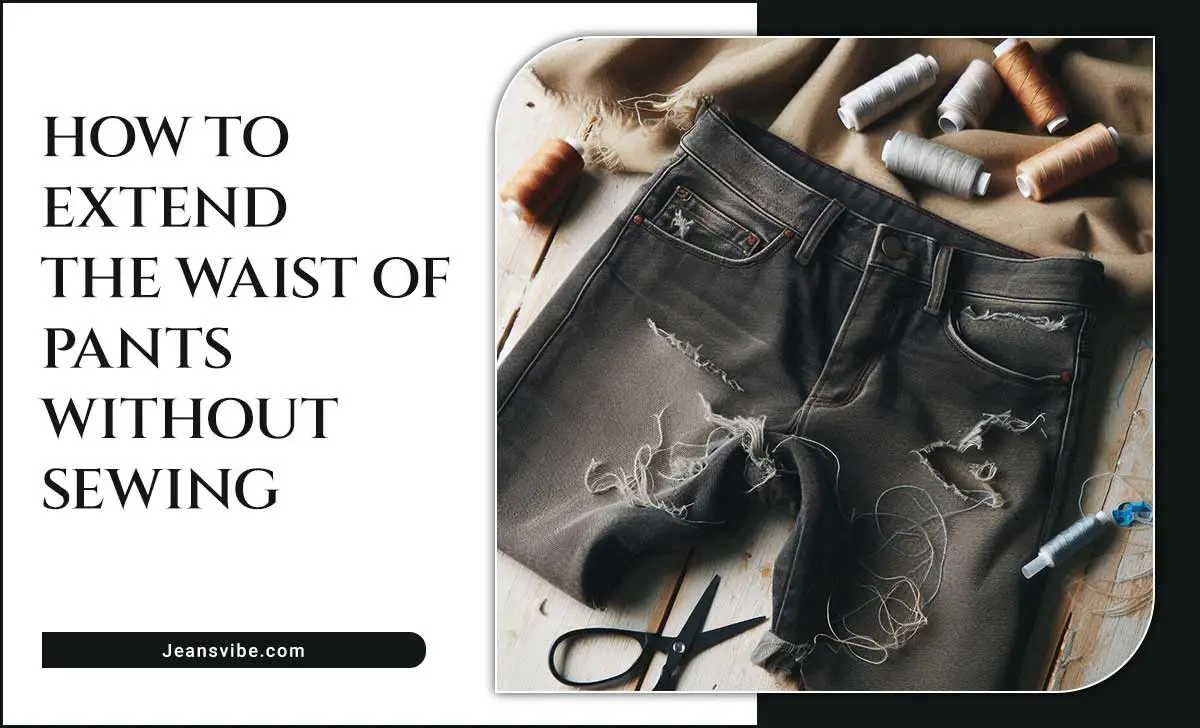Quick Summary
Yes, you can hem wide leg jeans using shampoo! This guide shows you how to achieve a cleaner, less frayed hemline by using shampoo to soften the fabric for easier cutting and a neater finish. Follow these simple steps for a DIY hem that looks professionally done.
How to Hem Wide Leg Jeans With Shampoo: An Essential Guide
Are your favorite wide leg jeans a little too long, pooling around your ankles and making you trip? It’s a common frustration! Before you even think about scissors, let’s talk about a surprisingly effective trick to get a cleaner hem: shampoo. You might be wondering how a common bathroom staple can help with clothing alterations, but it’s a genuinely helpful method for making the fabric more manageable. We’ll walk you through exactly how to use shampoo to get a crisp, neat hem on your wide leg jeans, so you can wear them with confidence.
This method isn’t about magically shrinking your jeans, but rather about preparing the fabric for a cleaner cut. By softening the denim fibers, shampoo can reduce fraying, making it easier for you to achieve a straight line and a tidier finish. It’s a simple, cost-effective solution that most people can do at home with items they already have. Get ready to give your jeans a perfect fit without a trip to the tailor!
Why Use Shampoo to Hem Jeans?
It might sound a bit unusual, but using shampoo to hem jeans is a practical hack born out of necessity and fabric know-how. Denim, especially heavier weights, can be stiff and prone to splintering when cut. This can lead to uneven edges and excessive fraying, which can look messy and unfinished. Shampoo, particularly those with mild conditioners, acts as a fabric softener. When applied strategically to the hemline, it slightly relaxes the denim fibers.
This relaxation makes the material easier to cut cleanly. Think of it like trying to cut dry spaghetti versus slightly damp spaghetti – the latter is a bit more yielding. For sewing and alteration tasks, a less stiff fabric offers less resistance, allowing your scissors or rotary cutter to glide through more smoothly. This results in a straighter cut and minimizes the “dusting” or splintering of threads that often happens with dry, stiff denim.
Furthermore, this technique can help control the amount of fraying you get. While some fraying is often desired for a casual look, excessive or uneven fraying can look unintentional. By softening the fibers before cutting, you can get a crisper edge that, even if you plan to let it fray, will do so more evenly. It’s a small step that makes a big difference in the final appearance of your DIY hem.
What You’ll Need
Gathering the right tools is the first step to a successful DIY project. For hemming your wide leg jeans with the shampoo method, you won’t need a lot of fancy equipment. Most of these items are probably already in your home.
Here’s a checklist of what you’ll need:
- Your Wide Leg Jeans: The star of the show! Make sure they are clean and dry before you start.
- Mild Shampoo: Any everyday shampoo will work. Avoid heavy-duty or medicated shampoos, as they might leave residue or be too harsh. A conditioner-based shampoo can be especially beneficial for softening.
- Water: For diluting the shampoo and rinsing.
- Measuring Tape or Ruler: For accurate measurements. Consistency is key for an even hem.
- Fabric Marking Tool: Tailor’s chalk, a fabric pen, or even a sharp pencil can be used to mark your hemline.
- Sharp Scissors or Rotary Cutter: Sharp cutting tools are essential for a clean cut. Fabric shears are ideal. If using a rotary cutter, you’ll also need a cutting mat.
- Straight Pins: To secure the hem in place before sewing or finishing.
- Iron and Ironing Board: For pressing the hem neatly.
- Sewing Machine or Needle and Thread: Depending on your chosen finishing method. For a quick, no-sew option, fabric glue or hemming tape can be used.
- Optional: Seam Ripper: If you need to remove an existing hem.
Step-by-Step Guide: Hemming Your Wide Leg Jeans With Shampoo
Follow these straightforward steps to achieve a perfectly hemmed pair of wide leg jeans using the shampoo method. It’s a simple process designed for a clean, professional-looking finish.
Step 1: Prepare Your Jeans and Mark the Hemline
First, try on your jeans to determine the desired length. Stand in front of a mirror and decide where you want the hem to fall. Consider the type of footwear you’ll typically wear with them, as this can affect the ideal length. Mark this point with a pin or temporary marker. Measuring from the crotch seam down to where you want the hem to end can also provide a consistent measurement.
Once you’ve decided on the length, lay your jeans flat on a clean surface. Use your measuring tape or ruler to measure the desired length from the waistband or crotch. Transfer this measurement to the outer seam and inner seam of each leg. Use your fabric marker to draw a straight line around the entire circumference of each leg at the chosen hem length. Remember that jeans often settle in length, so it’s generally better to hem slightly longer initially and then trim if needed.
Pro Tip: For wide leg jeans, ensure your hemline is perpendicular to the inseam and outseam to maintain the garment’s intended drape and silhouette. A 1-1.5 inch allowance for the hem fold is usually standard for a clean finish, but adjust based on your preference.
Step 2: Apply the Shampoo Mixture
Now for the unique part! In a small bowl, mix about two tablespoons of mild shampoo with a quarter cup of warm water. Stir gently to create a slightly sudsy, diluted mixture. You want enough to dampen the fabric, not soak it.
Dip a clean rag or sponge into the shampoo mixture and carefully apply it along the marked cutting line on the outside of one jean leg. Ensure the fabric is slightly dampened but not dripping wet. The goal is to soften the denim fibers just enough to facilitate a cleaner cut. Avoid applying too much water, which can make the denim soggy and harder to handle.
Work your way around the entire circumference of the leg, ensuring even application along the marked line. Repeat this process for the other leg of your jeans. Let the mixture sit for about 5-10 minutes to allow the shampoo to soften the fabric.
Tip: If you are sensitive to certain ingredients, patch-test the shampoo mixture on an inconspicuous area of the jeans first.
Step 3: Cut the Excess Fabric
After the shampoo has had a moment to work its magic, it’s time to cut. Pick up your sharp fabric scissors or rotary cutter. Lay the jean leg flat again, ensuring the marked line is accessible.
Begin cutting precisely along the marked line. Because the fabric is slightly softened, you should find that your scissors glide through more smoothly, producing a cleaner, less frayed edge than if you had cut dry, stiff denim. Take your time and maintain a steady hand for the straightest possible cut. If you’re using a rotary cutter, employ a cutting mat underneath for safety and precision.
Important Note: Maintain a consistent distance from the original hemline across the entire circumference. For a standard hem, you’ll typically be cutting off the original hem and about 1-1.5 inches below it, depending on how much you want to fold up.
Step 4: Prepare for Hemming (Folding and Ironing)
With the excess fabric removed, you should have a clean, raw edge. Now, you need to prepare this edge for its final finish. For a classic hem, you’ll typically fold the raw edge up twice.
First, fold the raw edge up by about 0.5 inches towards the inside of the jean leg. Press this fold firmly with your iron. This initial fold helps to neaten the raw edge and prevent further fraying.
Next, fold the fabric up again, this time by about 1 inch (or the width you desire for your finished hem). Use your ruler to ensure this second fold is even all the way around. Press this larger fold down firmly with your iron. This creates the main hem allowance.
Pin along the folded edge to secure it in place. Make sure the pins are placed evenly and don’t distort the line of the hem. This pressed and pinned hem is now ready for its permanent finish.
Step 5: Finish the Hem
You have several options for permanently finishing the hem, depending on your desired look and available tools. Here are the most common:
Option A: Sewing Machine Hem
This is the most durable and professional-looking finish. Using a sewing machine, stitch along the top edge of the folded hem, about 1/8 inch away from the folded edge. Use a stitch length appropriate for denim (typically 2.5-3.0 mm). If possible, use a denim needle and thread that matches your jeans. Backstitch at the beginning and end of your seam to secure it.
Option B: Hand Sewing Hem
For those without a sewing machine, hand sewing is a great alternative. Use a strong needle and thread that matches your jeans. A simple running stitch or a blind hem stitch can be used. A blind hem stitch is preferred for a nearly invisible finish. Ensure your stitches are small and even.
Option C: No-Sew Hem with Fabric Glue or Hemming Tape
This is the quickest method. Ensure the hem is perfectly folded and pressed. Apply a thin, even line of fabric glue or place hemming tape along the inside of the folded edge. Carefully press the top edge of the fold down onto the glue or tape. Allow to dry or set according to the product’s instructions.
Consider the Original Hem: If you want to recreate the original “distressed” hem look, you can carefully cut off the original hem, leaving just enough of the fraying threads. Then, you would proceed with hemming the raw edge you created with the shampoo method, but potentially with a slightly different folding technique to ensure the original threads are exposed.
Step 6: Final Touches and Wear
Once your hem is secured, remove all pins. Give the hem a final press with your iron to ensure all folds are crisp and flat. Trim any loose threads. You can also give the entire jean a light steam or press to ensure everything lays perfectly flat.
Try on your newly hemmed wide leg jeans. They should now fall at the perfect length, allowing you to walk comfortably without them dragging. Clean up any stray chalk marks or pen lines from your fabric marker.
Enjoy your perfectly fitted jeans! This simple shampoo trick makes a subtle but significant difference in achieving a clean, manageable hem.
Pros and Cons of the Shampoo Hemming Method
Like any DIY technique, the shampoo method for hemming jeans has its advantages and disadvantages. Knowing these can help you decide if it’s the right approach for your project.
| Pros | Cons |
|---|---|
| Easier Cutting: Softens denim fibers, making them less stiff and easier to cut cleanly. | Potential for Residue: If too much shampoo is used or not rinsed, it might leave a slight residue. |
| Reduces Fraying: Helps to minimize splintering of threads, leading to a neater raw edge. | Adds a Step: It’s an extra preparation step that you wouldn’t need with regular cutting if the fabric was already soft. |
| Accessible: Uses common household items, making it a budget-friendly option. | Not for All Fabrics: Primarily effective on stiff denim. Works less dramatically on already soft or very thin fabrics. |
| Improves Control: A softer fabric is easier to control and guide for a straighter cut. | Requires Careful Application: Over-wetting the fabric can make it difficult to cut accurately. |
| Enhances Finish: Contributes to a more professional-looking finished hem by providing a cleaner initial cut. | Minor Increase in Time: Requires a short waiting period for the shampoo to work. |
Alternatives to Shampoo for Softening Denim
While shampoo is a clever and effective tool, it’s not the only way to soften denim for easier hemming. If you don’t have shampoo on hand or prefer a different approach, consider these alternatives:
- Fabric Softener Spray: A spray bottle filled with diluted fabric softener (follow product instructions for dilution) can be sprayed directly onto the hemline. Let it sit for a few minutes before cutting.
- Water Only: Sometimes, simply dampening the hemline with plain water can make a difference, especially if the denim is only moderately stiff. It won’t condition the fibers as much as shampoo, but it can still help reduce fraying. You can use a spray bottle for even application.
- Steaming: A garment steamer can relax denim fibers. Holding the steamer to the marked cutting line for a minute or two can make cutting easier. This is a good option if you want to avoid adding any product to the fabric.
- Pre-washing: If your jeans are brand new and incredibly stiff, a gentle wash cycle with a fabric softener can prepare the entire garment, making the denim generally easier to work with. However, this is often impractical for a single hemming project.
When choosing an alternative, always consider the fabric type and the desired outcome. For most denim, either the shampoo method or a good fabric softener spray will yield excellent results by preparing the fibers for a cleaner cut.
Frequently Asked Questions (FAQ)
Here are answers to some common questions about hemming jeans, especially using the shampoo method.
Q1: Will shampoo damage my jeans?
A: Generally, no. Mild shampoos are designed to be gentle on hair and fabric. Using a small amount diluted with water and ensuring it doesn’t sit on the fabric for too long minimizes any risk. Avoid harsh or medicated shampoos.
Q2: How long should I let the shampoo mixture sit on the denim?
A: About 5-10 minutes is usually sufficient. The goal is to slightly relax the fibers, not to oversaturate or soak the denim.
Q3: Can I just skip the shampoo and cut dry denim?
A: You can, but you’ll likely experience more fraying and a less precise cut, especially with stiffer denim. The shampoo method makes the process significantly cleaner and easier.
Q4: What if I mess up the cut and it’s uneven?
A: Don’t worry! You can always trim a little more off to straighten the line. If you’ve made a significant error and cut too short, you might need to re-hem by folding less fabric, or in some cases, you might need to consider adding a band or cuff where the original hem was.
Q5: Do I need to wash my jeans after using shampoo to hem them?
A: It’s a good idea to rinse the treated area lightly with water, or give the jeans a quick wash and rinse cycle, especially if you’re concerned about any residue. However, for a single application on the hem, significant residue is unlikely if properly managed.
Q6: What needle type should I use for sewing denim?
A: For sewing machine or hand sewing denim, a denim needle (also called a jeans needle) is highly recommended. These needles are stronger and sharper, designed to pierce through thick, tough fabrics like denim without breaking or skipping stitches. For machine sewing, use a size 90/14 or 100/16 industrial denim needle.
Q7: How do I know how much length to cut off?
A: The best way is to mark your desired finished length while wearing the jeans and your usual shoes. Then, add 1 to 1.5 inches for the hem allowance (the fabric you fold up). For example, if you want the final jean hem to be at your ankle bone, you might mark that point, then measure down another 1.25 inches and cut at that second line. This extra fabric is folded up twice to create the finished hem.
Conclusion
Hemming wide leg jeans doesn’t have to be a daunting task. By incorporating a simple household item like shampoo, you can significantly improve the ease and precision of cutting your denim. This method, as outlined in our step-by-step guide, helps soften the fabric for a cleaner cut, reduces unpredictable fraying, and ultimately leads to a more polished DIY hem. Whether you choose to sew, use fabric glue, or opt for hemming tape, the preparation with our shampoo trick sets you up for greater success.
Remember, the key is to use just enough to dampen the fabric, not soak it, and to allow it a few minutes to work. With sharp tools, careful measuring, and a bit of patience, you can transform ill-fitting jeans into your perfectly tailored favorites. So next time your wide leg jeans are a little









